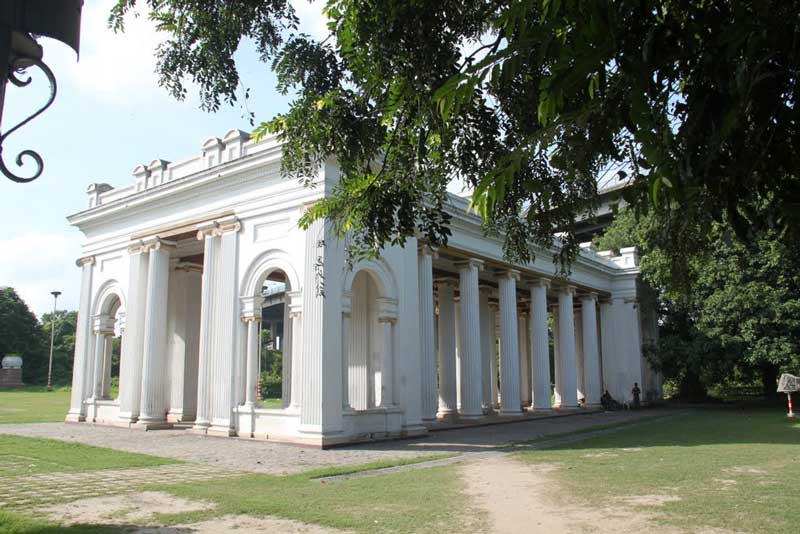
Born in the County of Essex in England on 20 August 1799, James Prinsep was the tenth child of John Prinsep and his wife Sophia Elizabeth Auriol.From his early days, James showed a talent for detailed drawing and mechanical invention and this made him study architecture. Unfortunately, as his eyesight declined due to an infection, he could not take up architecture as a profession and for a short period worked as an apprentice at the Royal Mint in London, under Robert Bingley. As he came to know of a possible opening in the assay department at the mint in Calcutta, he arrived at Calcutta, along with his brother Henry Thoby on 15 September 1819 and joined the Calcutta mint as assistant assay master, under Dr. Horace Hayman Wilson, the eminent Sanskrit Scholar.
However, within a year he was transferred on promotion to work as assay master at the Benares mint, where he was entrusted with the responsibility to determine the genuineness of precious metals, like gold and silver. During his tenure in the mint he introduced a uniform coinage and devised a delicate and precise balance to indicate the three-thousandth part of a grain. Meanwhile, as he completely regained his eyesight, he started to take a keen interest in the architecture at Benares, studied and illustrated the temples of the city, designed the new mint building at Benares and also built a church. Apart from that, he conducted a survey of Benares in 1822 and produced an accurate map of the old city, on the scale of 8 inches to a mile.

After the closure of the Benares mint in 1830, James Prinsep moved back to Calcutta as deputy assay master and promoted to the rank of assay master, when Wilson resigned in 1832. In the same year, he succeeded H.H. Wilson as the secretary of the Asiatic Society of Bengal and was instrumental in the publishing of the Journal of the Asiatic Society. As the founding editor of the journal, he contributed many articles in it covering various subjects, like chemistry, mineralogy, numismatics (study or collection of currency, including coins, tokens, paper money and related objects).and on the study of Indian antiquities. While in Calcutta, Joseph Prinsep was an important member of the municipal committee for improvements and improved the city drainage system by constructing a tunnel connecting the Hooghly River with the Sunderban Mangrove forest.

However, none of these feats can be compared with his invaluable contribution towards the unveiling of a dark chapter of the ancient history of civilization in India. Scholars had noticed that there are similar, even identical inscriptions on pillars and rocks in widely separated areas of India, but none could decipher the script in which they were written. Prinsep took all the pain to assemble all the available data and in 1837 finally decoded what is now known as the Brahmi script and finally, he also deciphered the Kharoshti scripts. By unlocking the mystery of both the ancient scripts and the deciphering numerous inscriptions, including those related to Emperor Ashoka, he rightly earned his position as one of the prominent Indologists.
A friend of Prince Dwarkanath Tagore, James Prinsep was well regarded in the elite circle of Calcutta. Unfortunately, as his health was deteriorating due to an infection of the brain, he was forced to return to England, where he died on the 22nd of April, 1840.

Located between the Water Gate and the St George's Gate of the Fort William and built in 1843, the Palladian porch of Prinsep Ghat was dedicated to the memory of James Prinsep. Rich in Greek and Gothic inlays, the structure was designed by the architect Captain W. Fitzgerald and the fund for its construction was collected through public subscription, which was the usual practice in those days.
Actually, Prinsep Ghat was constructed with the idea to replace the Chandpal Ghat as the point of embarkation or disembarkation for the royal British personnel and his associates and it was graced with the royal visits of 1875 (Albert Edward, Prince of Wales, the eldest son of Queen Victoria), 1905 and 1911 (King George V and Queen Mary).Initially, the pavilion of the Prinsep Ghat stood over 100 m from the river’s edge, however over the years, as the River Hoogly retreated towards the west, the steps of the Ghat were buried under the earth and Prinsep Ghat now stands quite some distance away from the river.

Constructed with six sets of tall Ionic columns, the beautiful Prinsep Ghat of Calcutta bears some resemblance to the famous Brandenburg Gate in Berlin. Unfortunately, due to lack of maintenance, negligence of the authority and above all vandalism by a class of people, the graceful monument, became a symbol of distress. Fortunately, in November 2001, the state's public works department came forward to take care of the heritage structure and timely restored it. Along with the renovation project of the magnificent monument, completed in 2012, a two kilometer stretch of the riverfront from Prinsep Memorial to Baje Kadamtala Ghat (Babu Ghat) was also beautified.

Today, there are illuminated landscaped gardens, fountains and pathways dotted with benches, where all age groups can spend evenings. It has become a favourite meeting place for the people of Calcutta, where facilities for romantic boat-riding along the river are also available. Prinsep Ghat is also equipped with a railway station named after it, as a part of the Circular Railway.
